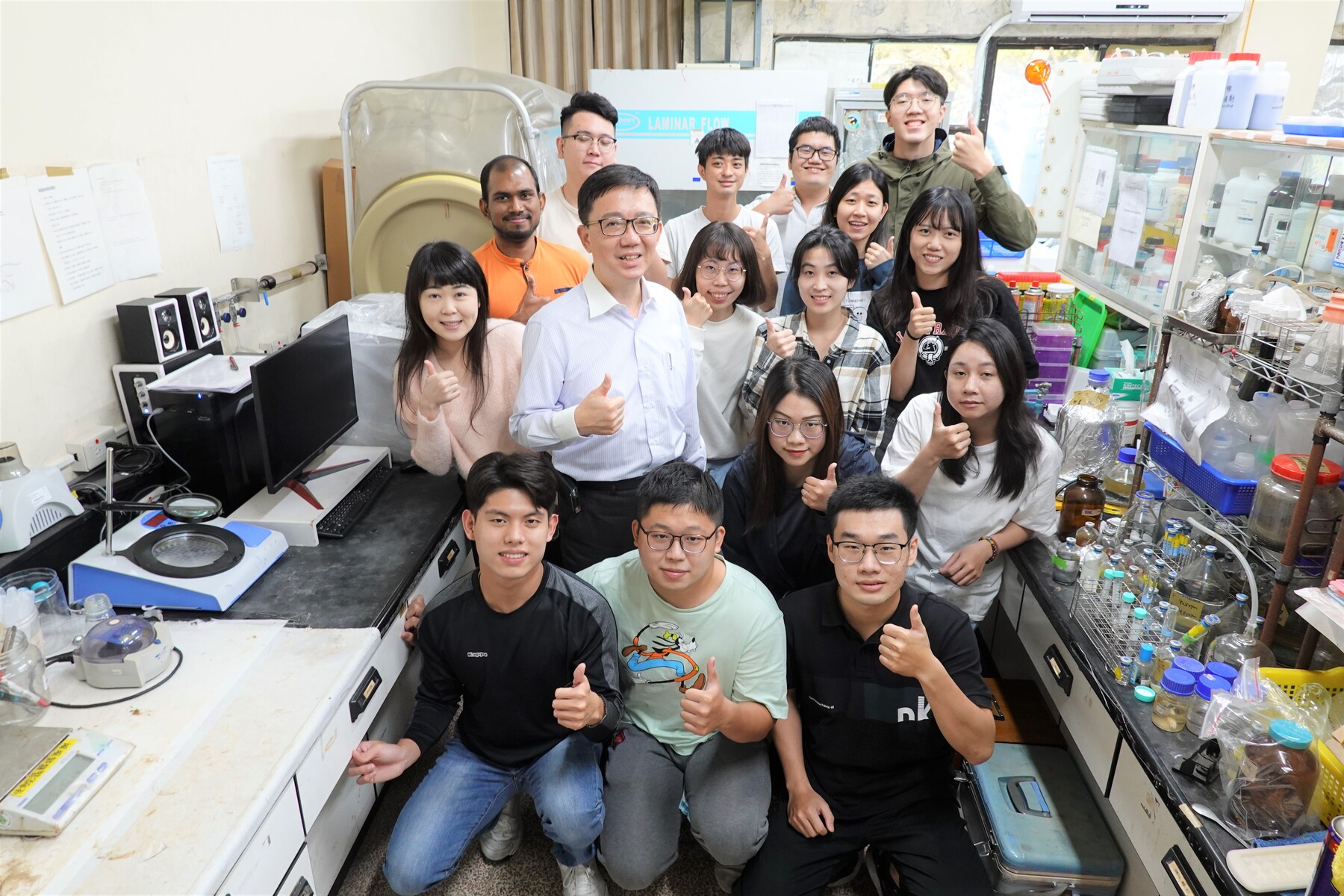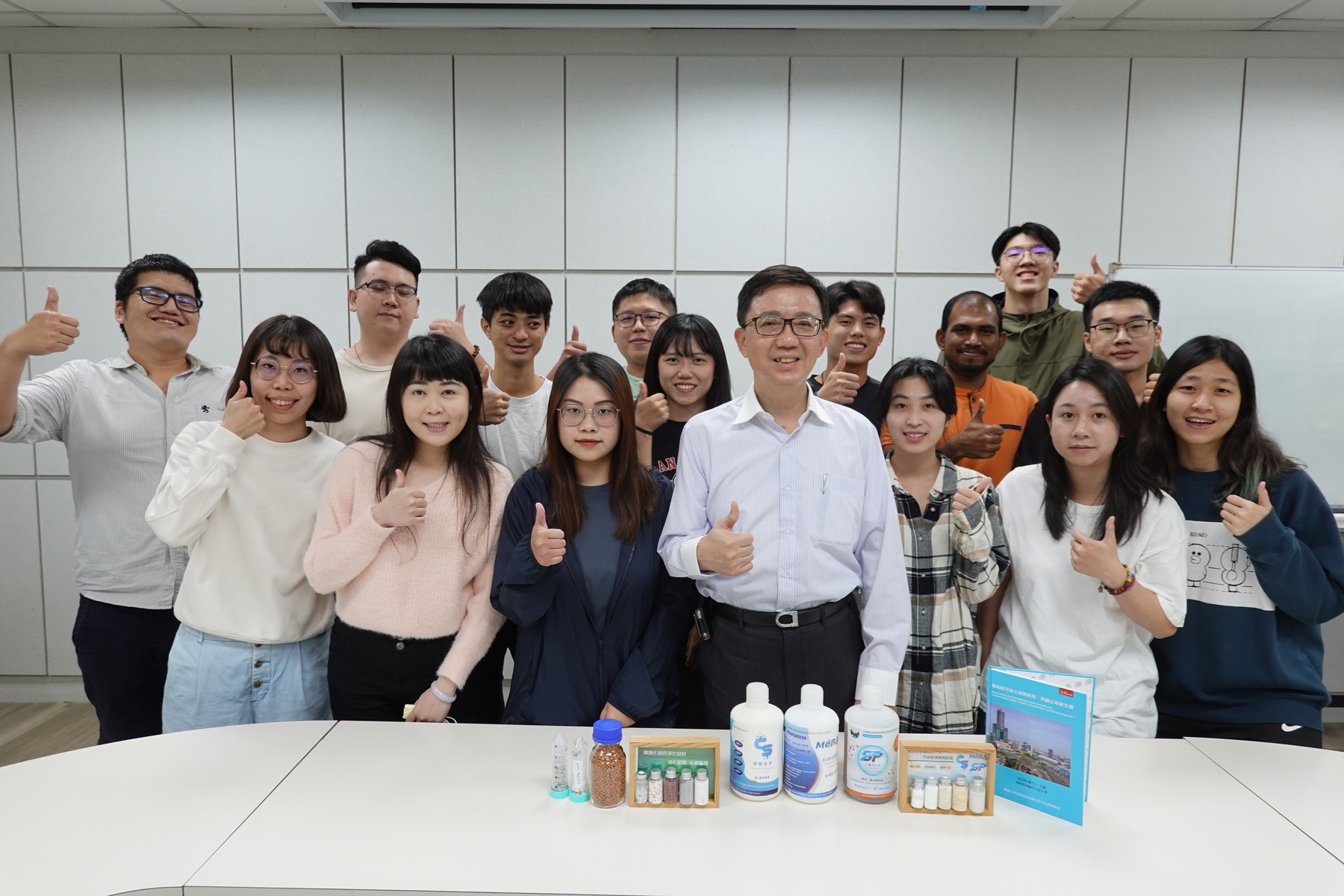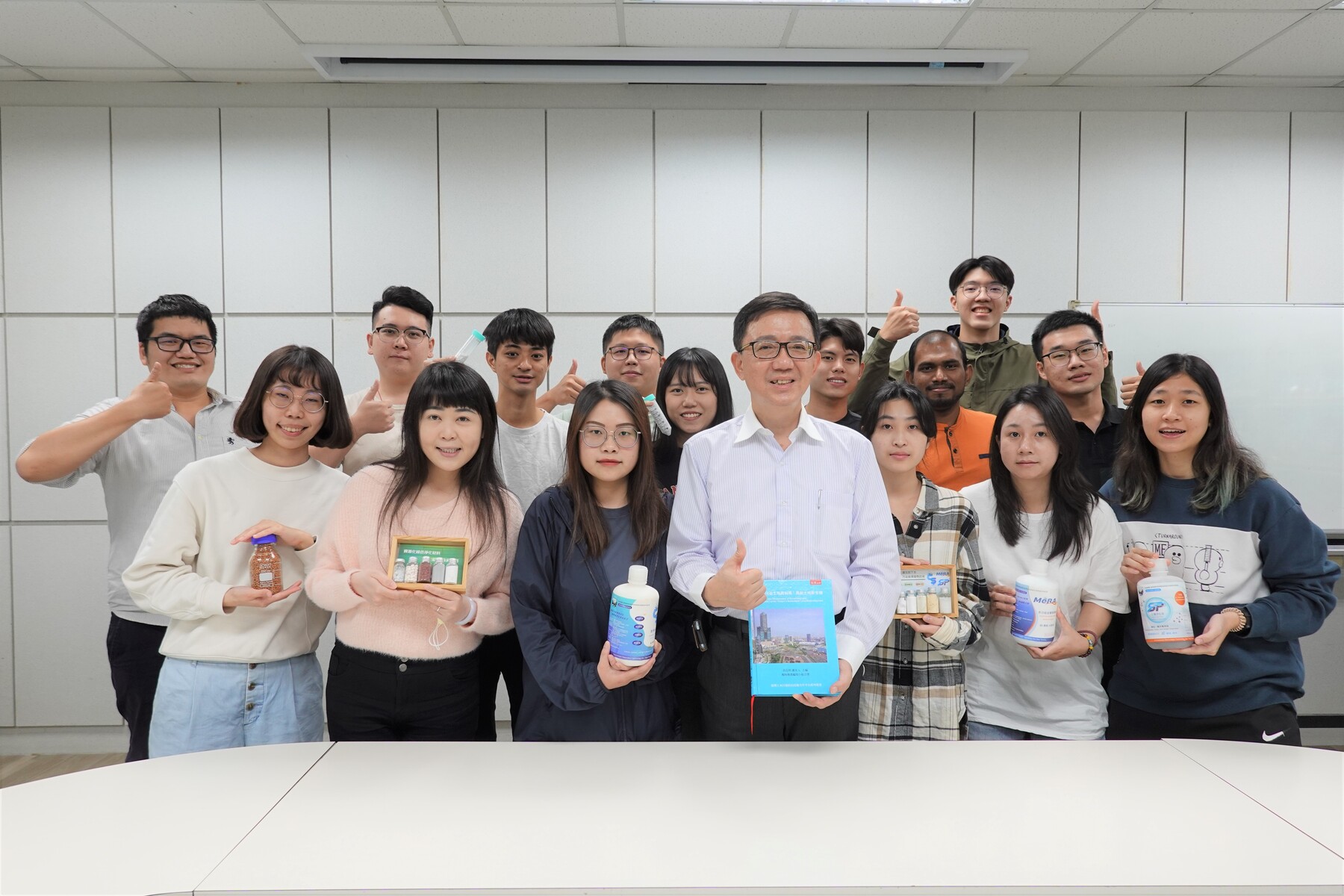NSYSU develops innovative green remediation technology to reduce the cost of soil restoration by 50%



2023-01-09
National Sun Yat-sen University has developed innovative green remediation technologies to assist domestic polluted soil remediation and restoration work and to accelerate subsequent revitalization, reuse, and development. Jimmy C. M. Kao, chair professor of NSYSU Institute of Environmental Engineering, who has just won the 66th Annual Academic Award from the Ministry of Education (MOE), and his research team have developed green remediation technologies and bioremediation reagents for soil and groundwater pollution treatment, reducing the remediation costs of the industry by at least 50% and avoiding the occurrence of secondary pollution, can take both economy and benefits into consideration. The related technologies developed by Jimmy C. M. Kao's team have also been successfully applied to the green remediation, restoration, and revitalization of polluted soil in major semiconductor technology factories.
"Soil and groundwater pollution remediation treatment costs tens of millions. If there is no suitable remedy, the cost is quite considerable." Jimmy C. M. Kao pointed out that soil and groundwater pollution is divided into three categories, including heavy metal pollution, oil pollution such as petroleum hydrocarbons, and pollution from chlorinated solvents used in industries such as dry cleaning, manufacturing, and metal surface treatment. The industries must remediate pollution according to the regulations, but successful restoration is not easy. For example, the former Taoyuan factory of Radio Corporation of America (RCA) Taiwan Limited was polluted by trichlorethylene carcinogens containing chlorine organic solvents. It cost hundreds of millions of dollars and more than 20 years of rectification, it has not yet been deregulated from the list of monitoring and inspection due to many factors. Therefore, the remediation and restoration of polluted sites must complete accurate pollution investigations first, including understanding the characteristics of pollutants, the degree and the extent of pollution, and selecting appropriate remediation methods to speed up the remediation work and achieve the remediation goals and deregulation.
Jimmy C. M. Kao said that the green and sustainable remediation technology developed by the research team uses the concept of biological remediation, passive system, on-site treatment, energy saving, and carbon reduction to improve pollution. The green remediation technology is environmentally friendly, has no secondary pollution problem, with extremely high development potential. In addition to the competitive price, the cost can be reduced by more than 50% compared with the same foreign technology. It can also "customize" the chemical reagents according to the geological conditions and hydrological environment of the soil and water on site. It has successfully assisted in the remediation of many polluted sites domestically to remove them from the regulation system and it can be on-site, modularized, and automated. For example, Jimmy C. M. Kao adjusted the viscosity of the reagents to prolong their service life in the fast-flowing groundwater area of the central rock formation, helping enterprises save the amount of medication. Since last year, they have cooperated with Hershey Environmental Technology Co., Ltd. to develop bio-remediation reagents and assist engineering consultant industries and domestic semiconductor technology manufacturers in green remediation. The results have been recognized by the industry and achieved the expected goals.
Jimmy C. M. Kao further explained the bioremediation technology of chlorinated solvent pollution. The core of bioremediation reagents is to develop a substrate that can be used as an alternative carbon source. Therefore, it can be used by microorganisms and strengthen the growth of microorganisms that can degrade pollutants. Taking trichlorethylene as an example, the biodegradation of trichlorethylene requires the combination of hydrogen ions and chlorine to degrade into non-toxic ethylene gradually. Therefore, the environment must be controlled during the remediation process to ensure that hydrogen is continuously produced to replace chloride ions. However, the by-product organic acids produced by biologically utilized substrates can easily cause water acidification, inhibit microorganisms' production of hydrogen, and cause water pollution at the same time. Therefore, by adding acid-base neutralizing buffers and other methods, the team developed a substrate that can alleviate the problem of lowering the pH value of the waterbody caused by anaerobic reactions, maintaining an appropriate acid-base condition in the environment, gradually degrading pollutants, and so as achieving the purpose of green remediation.
Jimmy C. M. Kao further explained the bioremediation technology of chlorinated solvent pollution. The core of bioremediation reagents is to develop a substrate that can be used as an alternative carbon source. Therefore, it can be used by microorganisms and strengthen the growth of microorganisms that can degrade pollutants. Taking trichlorethylene as an example, the biodegradation of trichlorethylene requires the combination of hydrogen ions and chlorine to degrade into non-toxic ethylene gradually. Therefore, the environment must be controlled during the remediation process to ensure that hydrogen is continuously produced to replace chloride ions. However, the by-product organic acids produced by biologically utilized substrates can easily cause water acidification, inhibit microorganisms' production of hydrogen, and cause water pollution at the same time. Therefore, by adding acid-base neutralizing buffers and other methods, the team developed a substrate that can alleviate the problem of lowering the pH value of the waterbody caused by anaerobic reactions, maintaining an appropriate acid-base condition in the environment, gradually degrading pollutants, and so as achieving the purpose of green remediation.
National Sun Yat-sen University has developed innovative green remediation technologies to assist domestic polluted soil remediation and restoration work and to accelerate subsequent revitalization, reuse, and development. Jimmy C. M. Kao, chair professor of NSYSU Institute of Environmental Engineering, who has just won the 66th Annual Academic Award from the Ministry of Education (MOE), and his research team have developed green remediation technologies and bioremediation reagents for soil and groundwater pollution treatment, reducing the remediation costs of the industry by at least 50% and avoiding the occurrence of secondary pollution, can take both economy and benefits into consideration. The related technologies developed by Jimmy C. M. Kao's team have also been successfully applied to the green remediation, restoration, and revitalization of polluted soil in major semiconductor technology factories.
"Soil and groundwater pollution remediation treatment costs tens of millions. If there is no suitable remedy, the cost is quite considerable." Jimmy C. M. Kao pointed out that soil and groundwater pollution is divided into three categories, including heavy metal pollution, oil pollution such as petroleum hydrocarbons, and pollution from chlorinated solvents used in industries such as dry cleaning, manufacturing, and metal surface treatment. The industries must remediate pollution according to the regulations, but successful restoration is not easy. For example, the former Taoyuan factory of Radio Corporation of America (RCA) Taiwan Limited was polluted by trichlorethylene carcinogens containing chlorine organic solvents. It cost hundreds of millions of dollars and more than 20 years of rectification, it has not yet been deregulated from the list of monitoring and inspection due to many factors. Therefore, the remediation and restoration of polluted sites must complete accurate pollution investigations first, including understanding the characteristics of pollutants, the degree and the extent of pollution, and selecting appropriate remediation methods to speed up the remediation work and achieve the remediation goals and deregulation.
Jimmy C. M. Kao said that the green and sustainable remediation technology developed by the research team uses the concept of biological remediation, passive system, on-site treatment, energy saving, and carbon reduction to improve pollution. The green remediation technology is environmentally friendly, has no secondary pollution problem, with extremely high development potential. In addition to the competitive price, the cost can be reduced by more than 50% compared with the same foreign technology. It can also "customize" the chemical reagents according to the geological conditions and hydrological environment of the soil and water on site. It has successfully assisted in the remediation of many polluted sites domestically to remove them from the regulation system and it can be on-site, modularized, and automated. For example, Jimmy C. M. Kao adjusted the viscosity of the reagents to prolong their service life in the fast-flowing groundwater area of the central rock formation, helping enterprises save the amount of medication. Since last year, they have cooperated with Hershey Environmental Technology Co., Ltd. to develop bio-remediation reagents and assist engineering consultant industries and domestic semiconductor technology manufacturers in green remediation. The results have been recognized by the industry and achieved the expected goals.
Jimmy C. M. Kao further explained the bioremediation technology of chlorinated solvent pollution. The core of bioremediation reagents is to develop a substrate that can be used as an alternative carbon source. Therefore, it can be used by microorganisms and strengthen the growth of microorganisms that can degrade pollutants. Taking trichlorethylene as an example, the biodegradation of trichlorethylene requires the combination of hydrogen ions and chlorine to degrade into non-toxic ethylene gradually. Therefore, the environment must be controlled during the remediation process to ensure that hydrogen is continuously produced to replace chloride ions. However, the by-product organic acids produced by biologically utilized substrates can easily cause water acidification, inhibit microorganisms' production of hydrogen, and cause water pollution at the same time. Therefore, by adding acid-base neutralizing buffers and other methods, the team developed a substrate that can alleviate the problem of lowering the pH value of the waterbody caused by anaerobic reactions, maintaining an appropriate acid-base condition in the environment, gradually degrading pollutants, and so as achieving the purpose of green remediation.
Jimmy C. M. Kao further explained the bioremediation technology of chlorinated solvent pollution. The core of bioremediation reagents is to develop a substrate that can be used as an alternative carbon source. Therefore, it can be used by microorganisms and strengthen the growth of microorganisms that can degrade pollutants. Taking trichlorethylene as an example, the biodegradation of trichlorethylene requires the combination of hydrogen ions and chlorine to degrade into non-toxic ethylene gradually. Therefore, the environment must be controlled during the remediation process to ensure that hydrogen is continuously produced to replace chloride ions. However, the by-product organic acids produced by biologically utilized substrates can easily cause water acidification, inhibit microorganisms' production of hydrogen, and cause water pollution at the same time. Therefore, by adding acid-base neutralizing buffers and other methods, the team developed a substrate that can alleviate the problem of lowering the pH value of the waterbody caused by anaerobic reactions, maintaining an appropriate acid-base condition in the environment, gradually degrading pollutants, and so as achieving the purpose of green remediation.
Click Num:
Share
